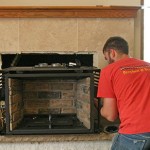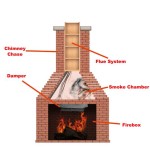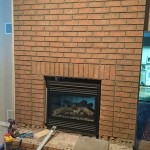```html
Wood Burning Fireplace With Gas Starter: Efficiency and Safety
Wood-burning fireplaces offer a classic aesthetic appeal, providing warmth and ambiance to a home. However, starting a wood fire can sometimes be a challenging and time-consuming process. A wood-burning fireplace with a gas starter presents a convenient solution, combining the traditional charm of a wood fire with the ease of ignition provided by a gas system. This combination allows for a quicker and more reliable start to a fire, without the need for kindling and extensive fiddling.
The integration of a gas starter into a wood-burning fireplace is typically achieved through the installation of a gas burner beneath the grate where the wood is placed. This burner is connected to a natural gas or propane supply line and is controlled by a valve, often located discreetly near the fireplace. The user simply turns on the gas, ignites the burner (often with a push-button igniter), and then places wood on the grate above the lit burner. The gas flame ignites the wood, and once the wood is burning steadily, the gas is turned off.
This article will explore the benefits, considerations, and operational aspects of wood-burning fireplaces equipped with gas starters, focusing on safety, efficiency, and maintenance.
Benefits of a Gas Starter in a Wood-Burning Fireplace
The primary advantage of a gas starter is the ease and speed of ignition. Starting a wood fire traditionally requires careful arrangement of kindling, tinder, and progressively larger pieces of wood. This process can be susceptible to drafts, dampness, and improper arrangement, leading to frustration and wasted effort. A gas starter eliminates much of this complexity.
With a gas starter, the user can simply stack the wood on the grate, turn on the gas, and ignite the burner. The consistent and concentrated heat from the gas flame quickly ignites the wood, ensuring a successful start even with slightly damp wood. This is particularly beneficial during colder months when wood may have absorbed moisture.
Another benefit is the reduced need for kindling. Gathering or purchasing kindling can be an additional task associated with traditional wood-burning fireplaces. A gas starter minimizes or eliminates this need, saving time and resources. This can also be a practical advantage for individuals who have difficulty bending or lifting to gather kindling.
Moreover, a gas starter offers a more consistent and controlled ignition process. The flame is concentrated and directed, ensuring that the wood ignites evenly and predictably. This reduces the risk of flare-ups or uneven burning, which can occur with traditional starting methods. The user has greater control over the initial stages of the fire, leading to a more stable and efficient burn.
Key Safety Considerations
Safety is paramount when operating any fireplace, and wood-burning fireplaces with gas starters are no exception. Regular maintenance and strict adherence to safety guidelines are essential to prevent hazards such as gas leaks, carbon monoxide poisoning, and chimney fires.
The gas starter system should be inspected regularly by a qualified professional. This inspection should include checking for gas leaks, ensuring the burner is operating correctly, and verifying that the gas valve is functioning properly. Any signs of damage or wear should be addressed immediately. A gas leak can pose a significant fire and explosion hazard, and even small leaks can lead to carbon monoxide build-up.
Carbon monoxide detectors are crucial for any home with a fuel-burning appliance, including wood-burning fireplaces with gas starters. These detectors should be installed on every level of the home, particularly near sleeping areas. It is important to test the detectors regularly and replace the batteries as needed. Carbon monoxide is a colorless, odorless, and deadly gas, and early detection is vital.
Proper ventilation is also essential. The chimney should be inspected and cleaned annually by a certified chimney sweep. Creosote, a flammable byproduct of wood burning, can accumulate in the chimney and pose a significant fire risk. A clean chimney ensures proper draft and prevents creosote buildup. Additionally, ensure that the damper is fully open before starting the fire and remains open throughout the burning process. This allows for proper venting of smoke and gases.
The use of seasoned wood is also critical for safety and efficiency. Seasoned wood has a lower moisture content than green wood, which means it burns more cleanly and produces less smoke and creosote. Wet or green wood can also be more difficult to ignite and may lead to smoldering fires, increasing the risk of carbon monoxide poisoning. Only use wood that has been properly dried and seasoned for at least six months.
Never leave a fire unattended, especially during the initial stages of ignition. Sparks and embers can escape the fireplace and ignite nearby flammable materials. A fireplace screen should always be used to contain sparks and embers, and flammable materials such as curtains, furniture, and rugs should be kept a safe distance from the fireplace. Before leaving the house or going to bed, ensure that the fire is completely extinguished and the embers are cold to the touch.
Operational Guidelines and Maintenance
Operating a wood-burning fireplace with a gas starter is relatively straightforward, but following proper procedures is crucial for safety and efficiency. Before starting the fire, ensure that the damper is fully open and that there are no obstructions in the chimney.
Stack the wood on the grate above the gas burner, leaving some space for the flames to circulate. Avoid overfilling the grate, as this can restrict airflow and lead to incomplete combustion. Turn on the gas valve and ignite the burner. Many gas starters have a push-button igniter, while others may require a match or lighter. Once the wood is burning steadily, turn off the gas valve. The gas starter is only intended to ignite the wood, not to sustain the fire.
Avoid using flammable liquids, such as gasoline or kerosene, to start or accelerate the fire. These liquids are extremely dangerous and can cause explosive flare-ups. The gas starter provides a safe and controlled method of ignition, eliminating the need for these hazardous substances.
Regular maintenance is essential to ensure the longevity and safe operation of the fireplace and gas starter system. In addition to annual professional inspections, homeowners can perform some basic maintenance tasks themselves. This includes cleaning the fireplace regularly to remove ashes and debris. Allow the ashes to cool completely before removing them, and dispose of them in a metal container away from flammable materials. Also, periodically check the gas burner for any signs of damage or corrosion. If any issues are detected, contact a qualified technician for repair.
The proper operation and maintenance of a wood-burning fireplace with a gas starter ensures both enjoyment and safety. Adhering to these guidelines contributes to a more efficient and reliable heating source, enhancing the overall living experience.
```
Simple Tips For Fall Fires With A Wood Burning Gas Fireplace Or Starter Hometown Plumbing North Atlanta Plumber

Gas Fireplace Starters In Chicago Capital Chimney Corp

How To Install A Log Lighter Fireplace Gas Starter Pipe

Gas Fireplace Starters Log Lighter Universal

Gas Fireplace Starters In Chicago Capital Chimney Corp

Why You Can T Burn Wood In A Gas Fireplace But Starter

Workings Of A Fireplace Royal Oak Mi Fireside Hearth Home

Want To Convert Gas Wood Fireplace Full Service Chimney

Starting Real Firewood In A Gas Fireplace

Greenstart Igniter Made In America Fireplace Xtrordinair
Related Posts








